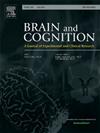探索高海拔吸烟者的自发大脑活动变化:从 ALFF/fALFF 分析中获得启示。
IF 1.4
3区 心理学
Q3 NEUROSCIENCES
引用次数: 0
摘要
简介本研究旨在探讨吸烟对高海拔(HA)人群大脑内在活动的影响。吸烟与各种神经改变有关,但目前仍不清楚高海拔环境中的吸烟者是否表现出特定的神经特征:方法:我们采用了不同频段的 ALFF 和 fALFF 方法来研究高海拔吸烟者和非吸烟者大脑功能活动的差异。来自高海拔地区的 31 名吸烟者和 31 名非吸烟者接受了静息态功能磁共振成像(rs-fMRI)扫描。对两组的 ALFF/fALFF 值进行了比较。相关分析探讨了大脑活动与临床数据之间的关系:结果:与HA中的非吸烟者相比,吸烟者右额叶上回(R-SFG)、右额叶中回(R-MFG)、右扣带回前皮层(R-ACC)、右额叶下回(R-IFG)、右额叶上/中回(R-MSFG)和左SFG的ALFF值均有所增加。在亚频段(0.01-0.027 Hz 和 0.027-0.073 Hz),吸烟者在 R-SFG、R-MFG、右扣带回中层(R-MCC)、R-MSFG、右侧中央前回和 L-SFG 中的 ALFF 值增加,而在 0.01-0.027 Hz 频段,右侧中央后回和中央前回的 fALFF 值减少。R-SFG的ALFF值与吸烟年限呈负相关:我们的研究揭示了高海拔环境中吸烟者的神经特征,突出了吸烟对大脑功能的潜在影响。这些结果为研究高海拔地区吸烟成瘾的神经机制提供了新的视角,可为制定相关干预措施提供参考。本文章由计算机程序翻译,如有差异,请以英文原文为准。
Exploring spontaneous brain activity changes in high-altitude smokers: Insights from ALFF/fALFF analysis
Introduction
This study aims to explore the impact of smoking on intrinsic brain activity among high-altitude (HA) populations. Smoking is associated with various neural alterations, but it remains unclear whether smokers in HA environments exhibit specific neural characteristics.
Methods
We employed ALFF and fALFF methods across different frequency bands to investigate differences in brain functional activity between high-altitude smokers and non-smokers. 31 smokers and 31 non-smokers from HA regions participated, undergoing resting-state functional magnetic resonance imaging (rs-fMRI) scans. ALFF/fALFF values were compared between the two groups. Correlation analyses explored relationships between brain activity and clinical data.
Results
Smokers showed increased ALFF values in the right superior frontal gyrus (R-SFG), right middle frontal gyrus (R-MFG), right anterior cingulate cortex (R-ACC), right inferior frontal gyrus (R-IFG), right superior/medial frontal gyrus (R-MSFG), and left SFG compared to non-smokers in HA. In sub-frequency bands (0.01–0.027 Hz and 0.027–0.073 Hz), smokers showed increased ALFF values in R-SFG, R-MFG, right middle cingulate cortex (R-MCC), R-MSFG, Right precentral gyrus and L-SFG while decreased fALFF values were noted in the right postcentral and precentral gyrus in the 0.01–0.027 Hz band. Negative correlations were found between ALFF values in the R-SFG and smoking years.
Conclusion
Our study reveals the neural characteristics of smokers in high-altitude environments, highlighting the potential impact of smoking on brain function. These results provide new insights into the neural mechanisms of high-altitude smoking addiction and may inform the development of relevant intervention measures.
求助全文
通过发布文献求助,成功后即可免费获取论文全文。
去求助
来源期刊

Brain and Cognition
医学-神经科学
CiteScore
4.60
自引率
0.00%
发文量
46
审稿时长
6 months
期刊介绍:
Brain and Cognition is a forum for the integration of the neurosciences and cognitive sciences. B&C publishes peer-reviewed research articles, theoretical papers, case histories that address important theoretical issues, and historical articles into the interaction between cognitive function and brain processes. The focus is on rigorous studies of an empirical or theoretical nature and which make an original contribution to our knowledge about the involvement of the nervous system in cognition. Coverage includes, but is not limited to memory, learning, emotion, perception, movement, music or praxis in relationship to brain structure or function. Published articles will typically address issues relating some aspect of cognitive function to its neurological substrates with clear theoretical import, formulating new hypotheses or refuting previously established hypotheses. Clinical papers are welcome if they raise issues of theoretical importance or concern and shed light on the interaction between brain function and cognitive function. We welcome review articles that clearly contribute a new perspective or integration, beyond summarizing the literature in the field; authors of review articles should make explicit where the contribution lies. We also welcome proposals for special issues on aspects of the relation between cognition and the structure and function of the nervous system. Such proposals can be made directly to the Editor-in-Chief from individuals interested in being guest editors for such collections.
 求助内容:
求助内容: 应助结果提醒方式:
应助结果提醒方式:


